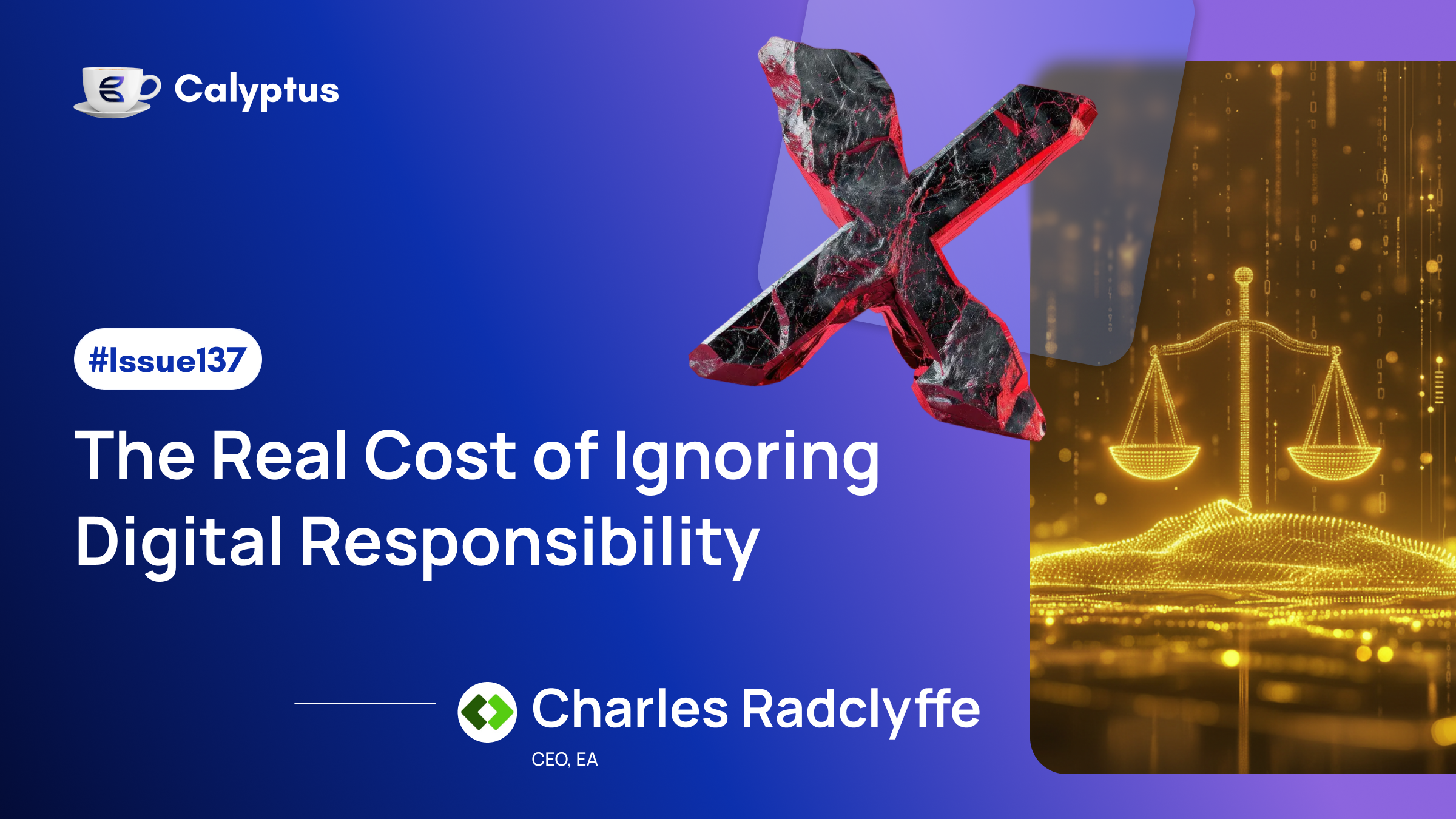This week on Coffee with Calyptus, we're joined by Vinay Mohan, Co-Founder of NodeFoundry, who shares his journey from advising global giants like Oracle and KPMG to pioneering the world's first retail CBDC with Movmint. Vinay dives into the complexity, and necessity, of simplifying Web3 for everyday users, and reveals why governments are rethinking trust and control in an AI-driven Web3 world.

From Oracle and KPMG to launching the world’s first retail CBDC with, what personal or market signal pushed you to pivot so boldly into the future of money?
It was at the 1o-year career mark when I first felt ‘the itch’ - the desire to do something radical and different, beyond the safety of the brand that I worked for and well outside my comfort zone. I had a good start in the world of management consulting with exposure to a range of financial services and public sector organisations, but I had yet to do something significant where a new technology paradigm was concerned.
A stint in Singapore in 2015 led me to explore the world of crypto and blockchain and eventually led me down the web3 rabbit hole. It was an interesting time to be alive - the world of money as we knew it was being challenged and reimagined everyday. Commercial banks were turning into fintechs, and central banks became open to the idea of defining money around a digital primitive. Suddenly the possibilities became impossible to unsee and there was no going back from there. The confluence of government, technology and finance is a lot of fun!
At NodeFoundry, you're tackling the biggest Web3 blocker: adoption. What’s been the hardest part of abstracting away crypto complexity for real users, and how close are we to that ‘iPhone moment’ for Web3?
The crypto community has constantly struggled with expressing itself in simple terms to traditional audiences. The fact that web3 runs on a somewhat counterintuitive playbook that the rest of the world has yet to fully accept doesn’t help either. Newbies and legacy users continue to be confronted by poor UI/UX (interspersed between ‘crypto bro’ lingo) and a general lack of education on how the technology works within the confines of established / web2 systems. Abstracting web3 calls for vastly simplifying the human-machine interface and making it work for web2 audiences. The simple but non-trivial solution is to minimise any user anxiety arising from having to work directly with the blockchain, its tokens, wallets or smart contracts. Giving users a web2-esque feel of security, integration and command-and-control, while letting them pay for services with their credit cards would be a good start.
With Merito, you’re unlocking capital for Japanese research through DeSci, what systemic challenge are you most excited to solve in that ecosystem, and why now?
Japan has world-class science, but many promising projects remain stuck in bureaucratic dead-ends due to limited access to private capital and rigid grant systems. Merito connects these overlooked innovators with aligned investors through a curated, trusted marketplace built for transparency, discovery, and deal execution.
The timing is key. Japan is actively seeking to revitalize its innovation pipeline, attract global capital, and convert research into economic outcomes. At the same time, the global DeSci movement is creating new models for attribution, collaboration, and borderless funding. Merito brings these two forces together; unlocking capital, accelerating progress, and putting Japanese science on a faster track to global relevance.
You’ve advised apex institutions on CBDCs and now mentor AI startups at Tribe, how are governments thinking differently about trust and control in this AI-meets-Web3 era?
The typical government stakeholder tends to vacillate between policy uncertainty and radical experimentation. The smart ones find a solid middle ground where they can build safe spaces for external stakeholders (from academia, industry, regulators, and developer communities) to think about innovation in a progressive and collegiate manner.
Singapore, in my view, has led the way for how a government should work with new technologies and uncover possibilities sustainably (or ‘fail fast and move on’ in the process). At Tribe, we bore witness to this during the early days of enterprise blockchain, and now with the NVIDIA partnership to promote advancements in AI. The Bahamas is the other country where I witnessed a true pioneering effort - the central bank quietly worked away to build atop a decades-long innovation mandate and launched the world’s first retail digital fiat currency. It’s a new era and governments should see this as a licence to reimagine and not be bogged down by constraints.
How are you personally weaving AI into your work with DePIN and DeSci? Any real-world use cases or experiments you’re most excited about?
Among a whole range of possibilities, I am particularly excited to see how AI enables a new age of ‘Government 3.0’, especially in emerging markets that suffer from enormous inequity and need leap-frogging into the future. There are billions who still cannot access much of what you and I take for granted in our everyday lives; be it internet connectivity, digital payments, public health systems, improved tax collection, budget transparency, and so on. These people need better societal and economic scaffolding to raise themselves up.
AI done right with government and institutional partners at the table could help reduce friction, democratise access, and ultimately shift public infrastructure from static service delivery to adaptive, citizen-centered systems. The world needs a new canvas - one where everyone has a brush, and every stroke shapes a shared future.
Solidity Challenge 🕵️♂️
Meet the KittyBank contract, a whimsical bank for feline aficionados to store their CatCoins. Purrhaps a closer inspection will reveal a bug lurking in the code.

Solidity Challenge Answer ✅
If receiver == sender, the catcoinBalances[sender] will double up on the amount instead of remaining the same.




